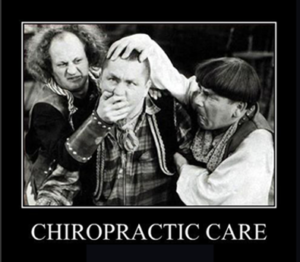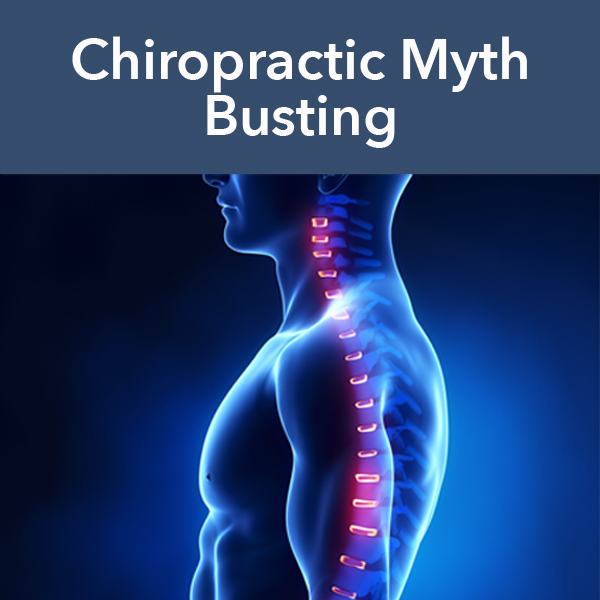
Please leave it to the professionals
I’ve been around and engaged in the Chiropractic profession now for 10 years. I love what I do. I love being able to help others choose health by removing the barriers to their own innate potential. However, there are plenty of things to be frustrated about when you’re part of an alternative health care profession that is both internally dysfunctional and externally misunderstood. For those that don’t know, chiropractors have been arguing amongst themselves for over 100 years about how the profession should be viewed and practiced. To the point where the public has yet to receive a clear message of what we really can do.
The result is a bit of a mess.
We’re quacks. We only fix low backs. We chase ambulances and give away our exams for free at health fairs. We crack bones.
I’m sure I can’t fix all the misperceptions in one blog post. But maybe I can tackle a few of the most common and ease some of the frustration. Knowledge is power. So here goes.
1. When my back is ‘out’, my Chiropractor puts it back in.
I’m sure this one is ‘our’ fault. It was probably a harmless way to ‘educate’ patients on what is happening in their spine and how an adjustment works. It’s wrong. I’d say in the past few years of treating hundreds of patients, there are only a handful of cases where this is even close to accurate. It’s called facet syndrome. Some on the joints of the spine have a small cartilage surface that can sort of get ‘stuck.’ The proper adjustment decompresses the joint and the patient receives instant relief. This is the exception. Not the rule. Most of the time, spinal conditions are the result of a lifetime of wear and tear, or an acute injury in which a rehabilitative effort – a process to restore health to the damage is required.
2. The problem of pain.
I’ve addressed the misconception of symptoms and health on the podcast recently. But it always comes back. A holistic view of health requires us to look beyond the symptom to find the source of the problem. Just because your neck hurts, doesn’t mean your neck is the problem.
3. The “Doctor” issue
No, I am not a Medical Doctor. But I am a real Doctor. DC stands for Doctor of Chiropractic. The curriculum is grueling (4,695 course hours). We learn to differentially diagnose extensively. Our specialty is holistic health via care for the spine, nervous system and whole person. Amongst chiropractors, there are further specialties in wellness, neurology, pediatrics, rehabilitation, sports, nutrition, etc. Please understand when you refer to your MD to your ‘real’ or ‘regular’ doctor, it is offensive. Besides, if you made me your ‘regular’ doctor and followed a holistic plan for health care, you’d have a lot more health and a lot less sick care.
4. The Crack
Chiropractors and patients alike seem to be crack addicts. First, let me clear something up. The audible noise heard and felt during an adjustment is called cavitation. It is not the bones cracking. It happens in the joint. This phenomenon occurs because joints have capsules filled with fluid. Changes in pressures within the joint can cause a release of gas, and thus a noise. Repeat – it is not bones cracking! Second, adjustments can be effective in restoring movement and neurological balance with or without the noise. So don’t get hooked on the crack. And please don’t describe what I do as a ‘crack.’ It’s the equivalent of nails on a chalkboard and it degrades the art, science and philosophy of all that I hold dear. The preferred term is adjustment.
5. The ‘slipped’ disc
Whoever started this one is on my list. An intervertebral disc can bulge, herniate, or extrude and sequester. But it can’t slip. Here’s the jelly donut analogy: Your disc is like a jelly donut, a cushioning space-maker between the bones (vertebrae) of the spine. The outer part of the disc is tough and flexible, like cartilage. The inside is softer and squishy. A disc bulge is where the outer ring is bulging in an area it shouldn’t. A herniation is when the outer ring tears and lets some of the jelly out into places it shouldn’t be. Sometimes a piece of the disc can break off and start floating around…that’s a sequestration.
One thing a disc absolutely cannot do is slip. Ever. For visual learners, watch this!
6. The condition runs in your family
When it comes to the neuromusculoskeletal system…it almost never runs in the family. I’ve previously addressed the myth of genetic predisposition equalling genetic expression. In the case of the spine, nervous system, and health in general, most of what we experience is due to stress, trauma and environmental toxicity. Not genetics.
7. Chiropractic is dangerous
This one probably requires its own dedicated post. But let me give you the short story. No, it’s not – especially when compared to other therapies / treatments / medications for the same condition. Insurance actuaries base malpractice premiums on one thing…numbers. While practitioners dealing with medication and surgery have malpractice insurance premiums in the tens of thousands of dollars, premiums for chiropractors generally run between $1000-$3000 annually. Why so little? Because it’s conservative care and there are so few injuries and thus few claims. Serious adverse reactions to chiropractic adjustments are estimated to occur in 1 in 5.85 million adjustments. Serious adverse reactions to ibuprofen occur in up to 16% of users (which is often used for musculoskeletal pain). Bottom line, chiropractors adjust newborn babies and the elderly and very few are ever seriously hurt.
8. I tore my ‘rotor cup’.
Ok, this is just a silly pet peeve, but I figured, while I’m at it… The ROTATOR CUFF is a term used to describe 4 important muscles in the shoulder. The rotor cup is…nothing.
9. Once I start getting adjusted, I have to keep going for life
There are two parts to this myth. One is easy. No, you don’t. Just because a joint is adjusted, it doesn’t suddenly become impossible to live without it being adjusted again. The second part is more complicated. It’s an issue of how we view health. No one complains that once you go to a dentist you have to brush and floss and get regular check ups on your teeth for the rest of your life. Why? Because the belief system about oral hygiene is already ingrained in our society. Taking care of our teeth regularly instead of waiting for tooth decay is smart and healthy. The same should be true for our spines and nerve systems. But it is not part of our belief system…yet. Regular maintenance for your spine (which is IRREPLACEABLE) makes sense. Keeping the nerve system (which controls and coordinates virtually ALL PHYSIOLOGICAL PROCESSES OF LIFE) in balance makes sense. You should get regular adjustments. But there’s no magical “once you start you can’t stop” button. It’s all in how you choose to approach health.
10. Chiropractic Cures All
There are books filled with stories about chiropractic miracles. And they’re true. But the perception that chiropractic fixes anything and everything is misguided. The truth is, our bodies want to heal. They are designed to heal. Chiropractic care can help facilitate that potential by removing barriers to health. The truth is…I’ve never cured anyone! It sounds funny, but ultimately it’s up to the individual and the physician within to do the work of health and healing. I like to say, chiropractic helps a lot of people help themselves.
Are there other things you’ve heard that have kept you away from chiropractic care for your spine and nervous system?
Let me know and I’ll see if I can clarify.
Yours in Health,
Dr. Scott Mills
I’d love for you to take advantage of the subscriber only coupon for $10 off my video rehab program – The Full Body Fix. I’ll also include my free eBook “Why Stretching Your Hamstrings Isn’t Working, and What To Do Instead.”
Last modified: April 7, 2017



 I'm Dr. Scott A. Mills and I'm a chiropractor in San Francisco who creates resources for athletes and everyday people to eliminate pain and improve the way you move.
I'm Dr. Scott A. Mills and I'm a chiropractor in San Francisco who creates resources for athletes and everyday people to eliminate pain and improve the way you move.
One Response to :
Chiropractic Myth Busting
Comments are closed.